THE RITE OF JOFFREY
One hundred years ago, a new ballet took place in Paris’ Théâtre des Champs-Élysées. This highly controversial work – for both its music and choreography – would revolutionize dance and thrust ballet and classical music into the modern era. As if the avant-garde nature of the dance was not enough to cause a near riot on opening night, the shocking music with its dissonance and irregular stresses and rhythms surely was. The ballet, which depicts a virgin sacrifice in an ancient pagan Russia – a maiden is chosen to die and must dance herself to death – was a collaborative project of three Russian artists: composer Igor Stravinsky, choreographer Vaslav Nijinsky, and designer Nicholas Roerich, an expert on folk art and ancient rituals.
Fascinatingly enough, the brouhaha surrounding Le Sacre du printemps (The Rite of Spring) was better-recorded for posterity than the actual ballet, which only ran for eight performances, three of them in London. In fact, by the time a remount was planned in 1920 using the original sets and costumes, no one remembered the original choreography. Diaghilev (who produced the Rite for Ballets Russe) had parted ways with Nijinsky, who was suffering from what is called “mental illness.†Since then, productions ranging from depictions of the Wild West to a tribe with a sacrificial young male have been seen world-wide. The music – propelled into the pantheon of classical composition by Walt Disney’s Fantasia (1940) – has become a standard of the orchestral repertoire.
Thus, after its short burst of glory, Nijinsky’s ballet was never to be done again. That is, until 1987, after dance historian Millicent Hodson and her husband, art historian Kenneth Archer, meticulously (and miraculously) re-stitched the quilt of the ballet over a 15-year period using annotated scores, reviews, photographs, et al. With the help of an NEA grant awarded to the Joffrey Ballet Company to reconstruct Le Sacre, the exclusive North American reconstruction of Nijinsky’s original choreography premiered in 1987. Last night, after 25 years, the ballet returned to L.A.’s Dorothy Chandler Pavilion in all of its colorful avant-garde glory to a packed house of well-wishers.
Up to now, I could never picture Rite of Spring without envisioning Disney’s animated earthquakes and dinosaurs, but Nijinsky’s choreography is so well-suited to Stravinsky’s primal, powerful music that the images witnessed on Friday will forever be seared into my memory (the ballet continues through Sunday). Roerich’s Technicolor costumes (executed by Robert Perdziola and Sally Ann Parsons) are a combination of prehistoric Slav and Native American, some crudely painted in geometric designs and others covered by bear skins. There is a grace within the manic goings on: The movement includes spasms, punching, stretching, kicking and prancing, often with the dancers’ arms outstretched to the pagan deities. Also, the hand movements are often similar to ones seen on the vases of antiquity; these mirror the same Egyptian-styled gesticulations which Nijinsky used in his choreography of L’après-midi d’un faune. If anything, it still remains so avant-garde that it could be viewed as daring for any modern company to introduce to the public. But what was once a fin de siècle shocker has cooled considerably. The biggest shock is that Hodson and Archer actually managed to reassemble what was once considered a lost ballet.
photos by Herbert Migdoll
The Joffrey Ballet
Le Sacre du Printemps (The Rite of Spring)
Dorothy Chandler Pavilion
ends on February 3, 2012
for tickets, call 213.972.0711 or visit Music Center
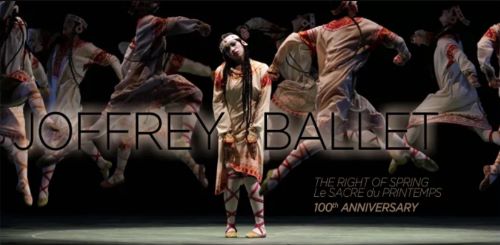
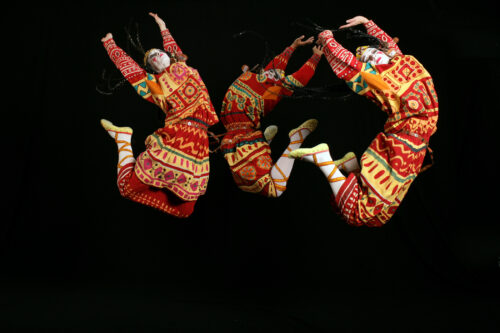
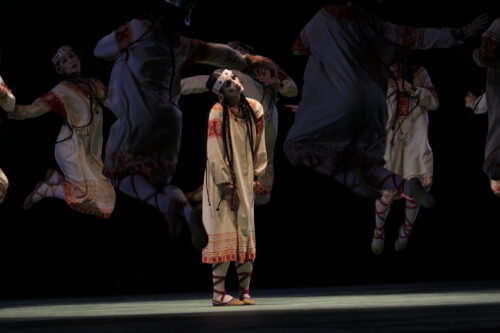
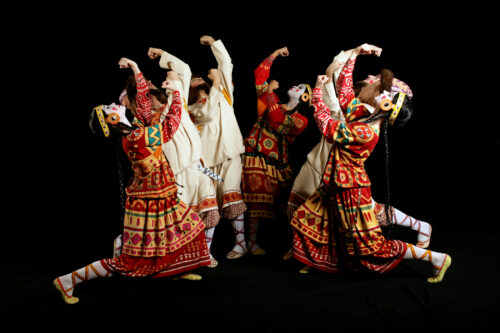
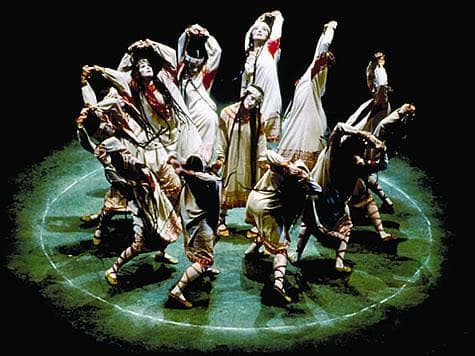

{ 1 comment… read it below or add one }
I’ve always been confounded and still fascinated with the mechanisms of how choreography is actually recorded on paper (from that time, before visual technology). Thanks for that review, I have even more respect.